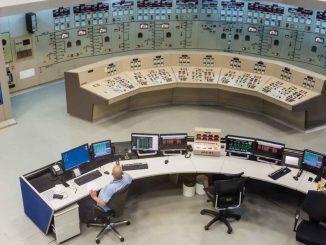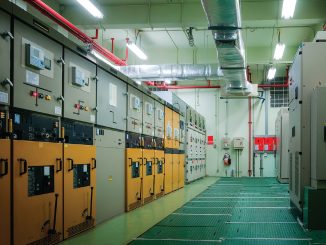 The Indian data centre market is recording double-digit growth, with an influx of private sector investment. The industry gained momentum after the Covid-19 pandemic, driven by a host of factors such as rapid digital transformation, technological advancements, a widening digital customer base and the rising number of smart devices. The roll-out of 5G has further highlighted the demand for data centres in the country due to an increased need for computing capacity and associated infrastructure. Given the growth potential of data centres and increased private sector participation, the central and state governments have launched several initiatives. The concept of sustainability and green data centres has also become a priority.
The Indian data centre market is recording double-digit growth, with an influx of private sector investment. The industry gained momentum after the Covid-19 pandemic, driven by a host of factors such as rapid digital transformation, technological advancements, a widening digital customer base and the rising number of smart devices. The roll-out of 5G has further highlighted the demand for data centres in the country due to an increased need for computing capacity and associated infrastructure. Given the growth potential of data centres and increased private sector participation, the central and state governments have launched several initiatives. The concept of sustainability and green data centres has also become a priority.
Market size
India’s data centre ecosystem is witnessing robust and sustained growth, propelled by Covid-19 tailwinds. As per industry estimates, the Indian data centre market is spread over 11 million square feet across the top seven cities with a capacity of 819 MW.
India’s data centre capacity stands at approximately 1.2 MW per million internet users, which is relatively low compared to the US (with about 12.6 MW per million internet users) and China (2.3 MW per million internet users). However, factors such as the rising adoption of cloud technology, internet of things, artificial intelligence (AI), big data analytics, expanding 5G roll-outs, growing data usage, increased use of digital commerce and the Digital Personal Data Protection Act, 2023 are expected to drive growth in the data centre space in the coming years.
These factors will drive growth in India’s data centre IT capacity, going from 780 MW in FY2023 to approximately 1,700 MW in FY2026, reflecting a compound annual growth rate of 30 per cent. This growth will be fuelled by surging data consumption, demand from hyperscalers, mass adoption of 5G and data localisation requirements. Further, since India lags in terms of data centre infrastructure, this leaves ample room for incremental capacity absorption. Revenue for the data centre industry is projected to increase more, going from Rs 84.5 billion in 2023 to Rs 198 billion in FY2026.
In terms of regions, Mumbai is expected to lead in co-location capacity addition, with a projected growth of 33 per cent in installed IT capacity from 354 MW in FY2023 to about 660 MW in FY2026. This will be followed by the National Capital Region, Pune, Hyderabad, Chennai, Bengaluru and Kolkata. Meanwhile, edge data centres are anticipated to usher in the next phase of growth and drive demand in Tier II and Tier III cities.
Cost and revenue
Lower real estate costs and skilled manpower make India a cost-effective market for data centre construction. Between FY2024 and FY2026, a capex of approximately Rs 450 billion is expected for data centre construction. Of this, 32 per cent is expected to be allocated for land and building materials, while 68 per cent is expected to go towards power set-up, cooling units and racks. Currently, capex investments are being undertaken with some visibility on contracts. Players are also investing upfront in land, buildings and common mechanical, electrical and plumbing (MEP) to demonstrate expertise. A significant portion of the capex is modular and depends on customer MEP requirements. Revenue for the data centre industry is projected to increase twofold.
Operating profitability in the industry is expected to rise to 42-43 per cent between FY2023 and FY2026. Additionally, operating margins are expected to increase by 200-300 basis points to reach 42-43 per cent by FY2026. However, net profit is expected to remain below 20 per cent.
Scaling up, enhancing operating leverage and improving power usage effectiveness are expected to moderately increase margins. Further, the percentage of green energy usage in the industry is expected to increase in the coming years. In the medium term, the rising share of renewable energy is expected to reduce costs, with the benefits passed on to customers. In terms of risks, unutilised capacity remains a key concern in the data centre industry. High unused capacities could result in a cash flow mismatch. Other risks include operations, technology change and security risks; heavy water usage; regulatory risks; power outages; and heavy import dependence.
Leveraging AI and ML
AI and machine learning (ML) are required to increase energy efficiency and sustainability, improve asset performance management, enhance customer relationship management and security, and bolster capacity management and planning in the data centre space.
India’s vision for “Make AI in India” and “Make AI Work for India” is aimed at leveraging AI for a variety of use cases. Keeping AI at the forefront of these digital innovations is expected to help drive data centre transformation in India.
Generative AI workloads have several implications for data centre architecture, and can add significant value to AI operations. Generative AI also helps in data centre management and provides enhanced security. Additionally, it drives innovation in the data centre space by pushing new technologies.
AI and automation are expected to help modern data centres achieve their sustainability goals. Currently, data centres account for only 4 per cent of the total greenhouse emissions worldwide. However, as the demand for data continues to grow, it is important to find ways to make data centres more efficient and sustainable. One way to achieve this is to automate various processes using AI-based robots. This can help improve data centre efficiency by reducing the need for human intervention and automating repetitive tasks. Additionally, creating a digital twin of a data centre with the assistance of AI and ML can help identify and address potential inefficiencies.
Key regulatory matters
Unlike certain other infrastructure sub-sectors, the data centre sector faces an intersection of critical core regulatory issues beyond the availability of land for data centres. There are several other regulatory matters that are equally important in the value chain, such as power, industrial classification and telecom infrastructure. Each of these factors needs to be considered.
One of the key issues is power. Typically, to structure a data centre as a captive power consumer, the developer can invest in a captive power generation unit. However, the issue remains for data centres where the data centre consumer, distinct from the developer, is the actual end user of the power and hence, discoms may refuse to recognise such consumption as captive consumption. This may result in a loss of benefits such as additional surcharge and cross-subsidy surcharge. There is a need for better clarity on the monetisation of captive power. Along similar lines, green power is also a concern. However, the notification of the Green Energy Open Access Rules has simplified the system with the establishment of a single model agency, that is, Grid Controller of India Limited. Further, to cater to investors’ aspirations for carbon neutrality, green energy needs to be incentivised. Further, there is no clarity on the national industrial classification code with respect to data centres. Such clarity is essential to monitor and incentivise foreign investments in the future. In relation to land and buildings, a separate classification in the National Building Code is needed for data centres as they cannot be categorised as commercial buildings due to their unique design and construction requirements.
Finally, access to telecom infrastructure also needs attention. Some gaps need to be filled, such as the fact that there is no direct access to certain passive infrastructure, such as dark fibre, for cloud service providers. Therefore, action is needed, either through liberalisation or a balanced approach, to solve these regulatory issues.
Outlook
The future outlook for data centres is quite positive as fast-paced digitalisation efforts and conducive government policies will drive their growth in the coming years. The growth of the data centre industry is driven by various demand factors. To cater to the rising demand, several companies have prepared detailed plans to increase their capacity in India, while hyperscalers such as Amazon Web Services, Microsoft and Google are revamping their business models.
India is in a unique position and has the potential to emerge as a global data centre hub. With cities such as Chennai and Mumbai that have abundant network and compute capacity combined with low latency, the country has the opportunity to serve the entire Asia-Pacific market.



